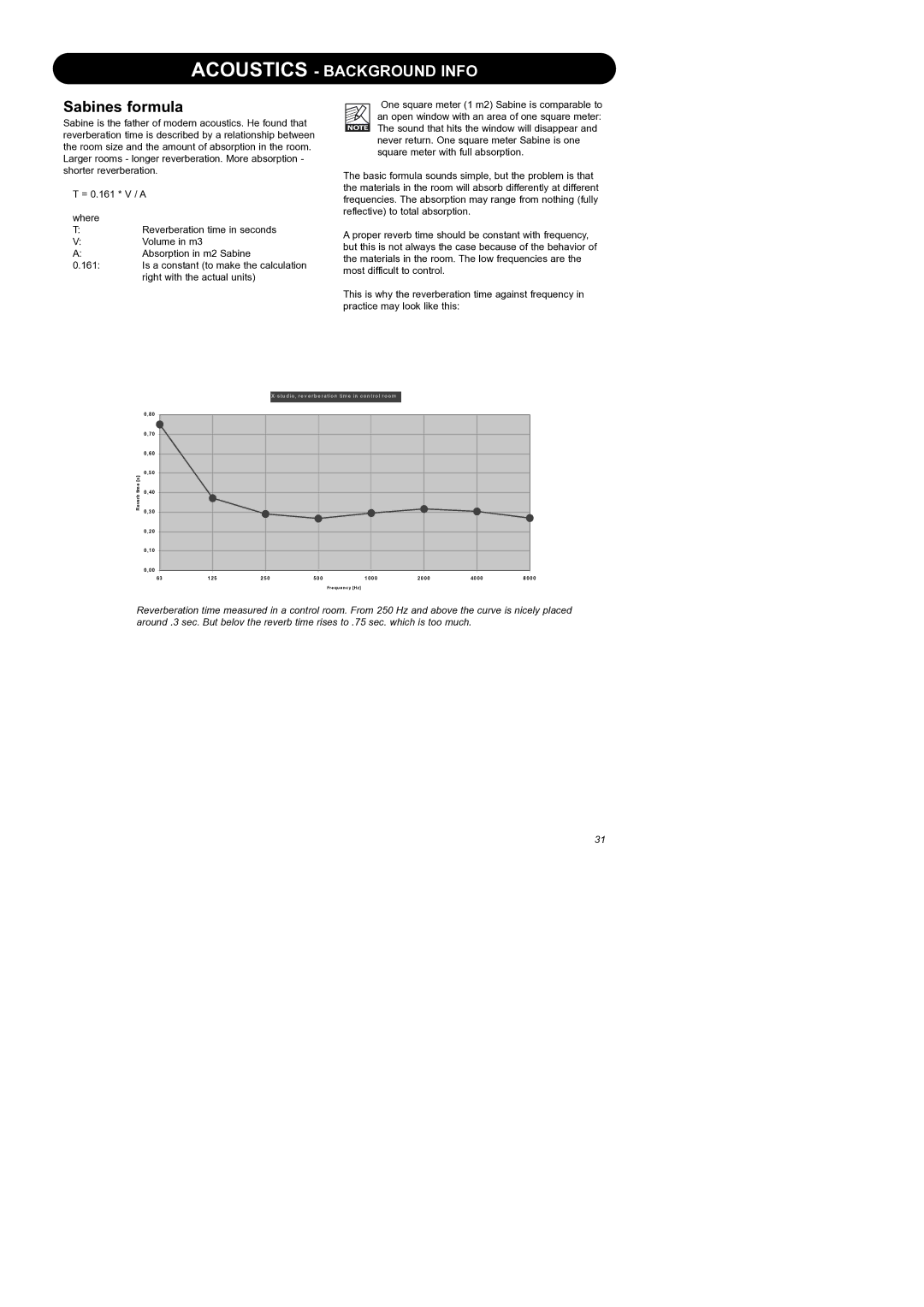
ACOUSTICS - BACKGROUND INFO
Sabines formula
Sabine is the father of modern acoustics. He found that reverberation time is described by a relationship between the room size and the amount of absorption in the room. Larger rooms - longer reverberation. More absorption - shorter reverberation.
T = 0.161 * V / A
where
T:Reverberation time in seconds
V:Volume in m3
A:Absorption in m2 Sabine
0.161: Is a constant (to make the calculation right with the actual units)
One square meter (1 m2) Sabine is comparable to an open window with an area of one square meter: The sound that hits the window will disappear and never return. One square meter Sabine is one square meter with full absorption.
The basic formula sounds simple, but the problem is that the materials in the room will absorb differently at different frequencies. The absorption may range from nothing (fully reflective) to total absorption.
A proper reverb time should be constant with frequency, but this is not always the case because of the behavior of the materials in the room. The low frequencies are the most difficult to control.
This is why the reverberation time against frequency in practice may look like this:
|
|
|
|
|
|
| ||
| 0,80 |
|
|
|
|
|
|
|
| 0,70 |
|
|
|
|
|
|
|
| 0,60 |
|
|
|
|
|
|
|
time [s] | 0,50 |
|
|
|
|
|
|
|
0,40 |
|
|
|
|
|
|
| |
Reverb |
|
|
|
|
|
|
| |
0,30 |
|
|
|
|
|
|
| |
|
|
|
|
|
|
|
| |
| 0,20 |
|
|
|
|
|
|
|
| 0,10 |
|
|
|
|
|
|
|
| 0,00 |
|
|
|
|
|
|
|
| 63 | 125 | 250 | 500 | 1000 | 2000 | 4000 | 8000 |
Fre que nc y [Hz]
Reverberation time measured in a control room. From 250 Hz and above the curve is nicely placed around .3 sec. But belov the reverb time rises to .75 sec. which is too much.
31
